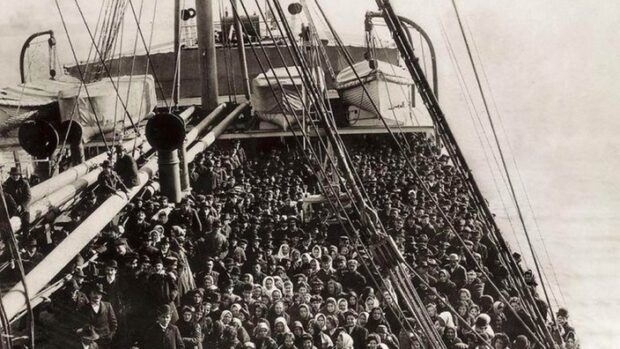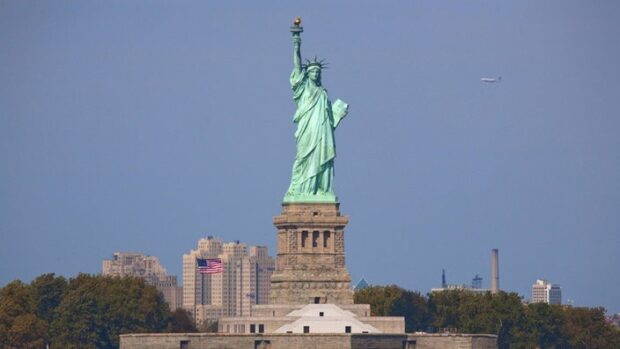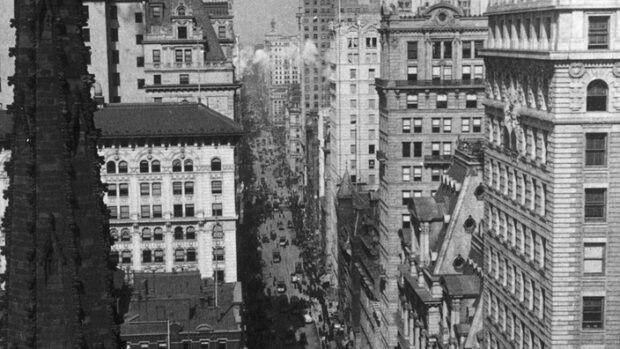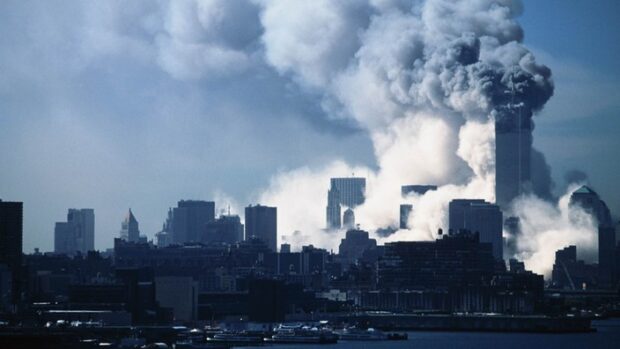From trading center for beaver pelts to the capital of the world: The history of New York does not yet last 400 years, and yet the city between the Hudson and East River has already seen more than most other metropolises in the world.
The first European to land in New York Bay doesn’t stay long. The Italian Giovanni da Verrazzano, traveling on behalf of the French king in 1524, moves on after a brief encounter with local Indians. He does not discover the island further back in the bay, which the natives call “Manna-hatta”.
It was not until 85 years later that the Englishman Henry Hudson returned to the area. He reports to his Dutch clients that there are tons of beavers and otters whose furs and skins can be traded.
In 1625 a Dutch trading post was established on Manna-hatta and the first European settlers settled there. In the following year Peter Minuit, the general manager of the responsible West India trading company, bought the island from the Lenape Indians.
He pays with goods worth 60 guilders, which corresponds to around 600 grams of silver. That these are jewelry and pearls, as some legend says, is rather unlikely. As a rule, axes, tools, and blankets were exchanged in such transactions. Minuit calls the settlement Nieuw Amsterdam (New Amsterdam).
In the following years, the residents of Nieuw Amsterdams experienced difficult times. Fights with the Indians, corruption, and bad economic decisions bring the colony to the brink of ruin.
It was not until General Director Petrus Stuyvesant, who took up his duties in 1647, that business began to flourish again. He had a hospital built, expanded the port, and laid out a network of streets, some of which can still be found in Manhattan city maps to this day.
But economic success arouses desires. The English crown wants to expand its power on the American continent. In 1664 four English warships with 2000 soldiers landed off Nieuw Amsterdam. Stuyvesant surrenders without a fight.
From now on the English have the say on the island and give the settlement a new name: New York – after the Duke of York, brother of the English King Charles II.
In the course of the 18th century, New York developed more and more into a commercial metropolis. For a long time now, not only furs have been handled there; tobacco, cotton, and slaves have also been traded.
When the English mother country tried to make even more profit from its North American colonies through additional taxes, there were repeated uprisings in New York from 1765, which finally culminated in the War of Independence (1775-1783).
After the victory of the colonies, New York becomes the capital of the newly founded United States of America for a short time, and the first US President George Washington takes his oath of office there.
A stock exchange was founded on Wall Street in 1817, and the Erie Canal was completed a few years later. This connects New York with the Great Lakes and can open up new trade routes to the Midwest.
From the 1830s onwards, the flow of immigrants from Europe increased more and more, especially Irish and Germans looking for their fortune in New York. In 1850 half a million people were already living in the city. But not all of them benefit from the onset of industrialization. Violence, corruption, and crime prevail in Manhattan’s slums.

In 1874 New York expanded beyond Manhattan for the first time. Areas on the mainland west of the Bronx River will be incorporated.
In 1886 the city’s most famous landmark was inaugurated: the Statue of Liberty. The 46-meter-high figure, which is erected on an island between Manhattan and Staten Island, is a gift from France. It becomes a symbol of freedom for immigrants from all over the world, who pour unchecked into the USA and mostly go ashore in New York.
In 1898, the New York metropolitan area as we know it today was finally created. Manhattan and Bronx unite with the previously independent communities Brooklyn, Staten Island, and Queens as “Greater New York”, which consists of said five districts. At the turn of the century, 3.4 million people lived there.

Symbol of freedom for immigrants from all over the world
At the beginning of the 20th century, the social structure of New York changes. Until then mainly white Europeans lived there, now more and more blacks are coming from the south of the USA, who hope for more political and economic freedom in New York.
This is how a district is emerging in the north of Manhattan that is almost exclusively inhabited by blacks: Harlem is quickly becoming the center of a new Afro-American culture.
The number of Jewish immigrants is also increasing sharply. It is estimated that over a million Jews immigrated to New York between 1880 and 1940. They too shape the image of the city, which is increasingly becoming a melting pot of cultures. No language that is not spoken there, no culture that is not represented there.
In 1910, 2.8 million people lived in Manhattan alone – an overpopulation that the city administration is trying to get under control through various measures. The subway, which opened in 1904, is constantly being expanded, making it possible for hundreds of thousands to commute from the surrounding area to work in Manhattan.
In addition, the existing space should be better used. As the length and width of the island, which is only 1.4 kilometers narrow in places, can no longer be built, one goes up.
The first skyscraper in the city was built in 1888, the Tower Building, and the basis for New York’s typical skyline was laid between 1910 and 1930. In 1929 there were 188 high-rise buildings with more than 20 floors in the city. The global economic crisis, which began in New York in 1929, can only temporarily slow down the urge to expand.

Modern New York takes shape in the 1930s
After the end of the Second World War, New York is now the largest city on earth with 7.5 million inhabitants: the center of the financial world, economic metropolis, cultural pioneer, media capital. When the newly founded United Nations established its permanent headquarters on the East River in 1946, New York also played first fiddle in the political world.
But the social problems are increasing. Many districts are neglected, drugs and crime play an increasingly important role, strikes and riots are the order of the day. The chronically clammy city administration is on the brink of bankruptcy in 1975.
With the Wall Street boom in the 1980s, New York is also picking up again. Unemployment in the city is falling, and mayors such as Edward Koch and Rudolph Giuliani have succeeded in lowering crime rates and revitalizing neglected streets.

The attack on the World Trade Center changed the world
The terrorist attacks on the World Trade Center on September 11, 2001, not only change the architecture of New York. Observers believe that the way of life in the city has also changed since then.
Characteristics such as egoism, cynicism, and superficiality, which so far many New Yorkers have cultivated, have been replaced by more seriousness and a greater interest in others. On the other hand, Muslim groups complain about an increase in hostility and reservations.
The attacks could not affect the status of the city: New York is still the capital of the world, the object of many dreams, a place of unlimited possibilities. And it will probably stay that way for a long time.
With a metropolitan area of almost 19 million people, New York City is by far the largest city in the USA. As early as 1836, the New York harbor was the hub of the waves of immigration. Since then, not only people from Europe but also from Africa, Asia, and Latin America have emigrated to the “land of unlimited possibilities”. To this day, the cityscape in New York is strongly multinational and offers living space for the most diverse cultures of the world.
Like us on Facebook for more stories like this: